What to do if my Brother All in One Printer does not power on?
- KkcruzJul 28, 2025
Check that the printer's power cord is correctly connected and that the printer's power is turned on.
What to do if my Brother All in One Printer does not power on?
Check that the printer's power cord is correctly connected and that the printer's power is turned on.
What to do if my Brother MFC-J5730DW All in One Printer shows an error on the LCD or Status Monitor?
To find the error and the solution, check the LCD or the machine's status in Status Monitor on your computer.
What to do if my Brother MFC-J5730DW All in One Printer interface cables are not securely connected?
Make sure that the interface cables are securely connected to both the machine and the computer. If you're using a wireless connection, verify the wireless connection setup.
What to do if protective parts are not removed from Brother All in One Printer?
Make sure you have removed all of the orange protective parts from the machine.
What to do if ink cartridges are not installed correctly in Brother MFC-J5730DW All in One Printer?
Verify that the ink cartridges are installed correctly.
What to do if scanner cover or jam clear cover is not closed on Brother MFC-J5730DW All in One Printer?
Make sure that the Scanner Cover and the Jam Clear Cover are fully closed.
Explains symbols and conventions used in the user guide for warnings, cautions, and notes.
Lists Microsoft, Apple, Nuance, Wi-Fi Alliance, Flickr, Google, Mozilla, Bluetooth, Intel, Evernote, Mopria, and WordPerfect.
Provides crucial information regarding product usage, regional restrictions, and software illustrations.
Outlines essential checks before any printing operation, including software installation and cable security.
Details the components of the control panel, including the LCD, menu buttons, dial pad, and power indicator.
Explains the three Home screens, their functions, and access to features like Shortcuts, Wi-Fi setup, and Settings.
Describes how new information from Brother appears in the information bar when notification settings are enabled.
Explains how to access and navigate the machine's settings via the touchscreen, covering menus like Maintenance and Wi-Fi.
Provides instructions on how to use finger gestures and buttons to navigate the touchscreen interface for settings and features.
Guides users on how to change the Ready screen to access specific functions like Screen 1, Screen 2, Screen 3, or Shortcuts.
Explains how to change the default screen for Copy and Scan modes on the machine's interface.
Describes how to access the Brother Utilities application launcher for convenient access to installed Brother applications.
Covers instructions for loading paper into various trays, including the multi-purpose tray and manual feed slot.
Details how to load documents into the Automatic Document Feeder (ADF) and onto the scanner glass.
Explains various printing options from a Windows computer, including photo printing, document printing, and poster printing.
Details how to print photos, documents, and other print-related tasks from a Macintosh computer.
Guides users on how to print files directly from a USB flash drive, including photos and PDF files.
Explains how to initiate scans using the machine's control panel buttons for various destinations like PC, email, and FTP.
Covers scanning photos and documents using ControlCenter4 Home/Advanced mode, Nuance PaperPort, and Windows Fax and Scan.
Provides instructions for scanning using ControlCenter2 and TWAIN-compliant applications on a Macintosh computer.
Details how to configure scan settings such as the scan job email report via Web Based Management.
Explains the basic process of making copies of a document using the machine's control panel.
Guides users on selecting enlargement or reduction ratios to resize copied data.
Explains how to sort multiple copies to stack them in the desired order.
Covers features for copying multiple pages onto one sheet (N in 1) or creating poster copies.
Details how to perform 2-sided copying to reduce paper usage.
Explains how to use the 2in1(ID) feature to copy both sides of an identification card onto one page.
Describes how to use predefined shortcuts for A3 or Ledger size paper copying, including Note style.
Explains how to use Ink Save Mode to print lighter colours and emphasize image outlines, saving ink.
Provides details on various copy settings such as Quality, Paper Type, Paper Size, Density, and Stack/Sort.
Guides on how to use predefined settings for copying, like A4 to A3, Normal, 2-sided, and Poster copies.
Covers various methods for sending faxes, including from the machine, ADF, manually, and at specified times.
Explains how to set up receive modes, previews, and memory options for incoming faxes.
Details how to manage voice operations and store fax numbers, including setting up groups for broadcasting.
Discusses telephone line types, Caller ID, external answering devices, and external/extension telephones.
Covers settings for transmission verification reports and fax journal intervals, as well as printing reports.
Explains how to use PC-FAX for sending and receiving faxes directly from a computer using Windows or Macintosh.
Compares network features and connections supported by different operating systems like Windows and OS X.
Explains how to configure and change network settings using management utilities like BRAdmin.
Provides alternative methods for wireless network setup, including WPS and manual configuration.
Covers advanced network functionalities like I-Fax, LDAP search, and SNTP time synchronization.
Provides advanced network information, including resetting network settings and printing WLAN reports.
Advises on disabling insecure protocols like FTP and TFTP for enhanced network security.
Details how to restrict functions, set user page limits, and grant access to specific features on the Brother machine.
Explains how to configure and manage certificates for secure SSL/TLS communication.
Covers secure email configuration using Web Based Management and SSL/TLS for sending and receiving.
Explains IEEE 802.1x authentication standards for limiting network access from unauthorized devices.
Explains how to use Brother Web Connect to access online services like Google Drive, Flickr, and Facebook.
Details how to use Google Cloud Print to print to registered printers via Google account from network-compatible devices.
Describes AirPrint as a mobile printing solution for Apple devices, enabling wireless printing without installing drivers.
Explains wireless printing from Windows mobile devices without needing printer drivers.
Covers Mopria Print Service for Android devices, allowing connection to the same network for printing without additional setup.
Explains how to use Brother iPrint&Scan to print and scan from various mobile devices like Android, Apple, and Windows.
Details NFC capabilities for simple transactions and wireless connections between devices by touching the NFC symbol.
Explains how to use ControlCenter4 software for quick access to frequently used applications and machine features.
Describes the use of Brother's ControlCenter software for scanning photos and saving them in various formats on Macintosh.
Lists common error and maintenance messages and provides causes and recommended actions for resolution.
Provides steps to locate and remove jammed documents from the ADF unit and other machine areas.
Guides on locating and removing jammed paper from various parts of the machine, including trays and feed slots.
Offers general troubleshooting advice and directs users to contact Brother customer support for complex issues.
Addresses common difficulties related to paper handling, printing quality, and paper feed issues.
Troubleshoots issues related to telephone line connections, dialling, and receiving/sending faxes.
Covers miscellaneous issues such as copying problems, scanning difficulties, and direct photo printing issues.
Provides solutions for issues related to network connectivity, including wireless setup and communication errors.
Addresses common issues encountered with Google Cloud Print™, such as machine display and printing problems.
Troubleshoots issues with AirPrint, such as the machine not displaying in the printer list or printing only the first page.
Guides on how to replace ink cartridges, including handling precautions and cartridge compatibility.
Provides instructions for cleaning various parts of the machine, including the scanner, print head, and rollers.
Explains how to check print quality, alignment, ink volume, and machine status via the control panel or computer.
Details how to adjust paper feed settings to reduce vertical lines on printouts.
Advises on adjusting print settings like Reduce Smudging and Slow Drying Paper to resolve printing issues.
Provides instructions on how to properly pack and ship the machine, including removing protective parts and ink cartridges.
Covers customization of settings, creation of shortcuts, and management of options via the machine's LCD.
Explains how to change machine settings using Web Based Management, Remote Setup, or network management utilities.
Provides detailed technical specifications for the printer, including memory, LCD, power, dimensions, weights, and noise levels.
Explains how to enter text using the touchscreen keyboard, including character cycling, inserting spaces, and making corrections.
Discusses the quality, benefits, and environmental advantages of using recycled paper.
| Duplex printing | Yes |
|---|---|
| Print technology | Inkjet |
| Maximum resolution | 1200 x 4800 DPI |
| Print speed (ISO/IEC 24734) mono | 22 ipm |
| Print speed (ISO/IEC 24734) color | 20 ipm |
| Time to first page (black, normal) | 6 s |
| Duplex print speed (ISO/IEC 24734) mono | 12 ipm |
| Duplex print speed (ISO/IEC 24734) color | 11 ipm |
| Print speed (black, normal quality, A4/US Letter) | 35 ppm |
| Print speed (color, normal quality, A4/US Letter) | 27 ppm |
| Copier resize | 25 - 400 % |
| Maximum copy resolution | 600 x 600 DPI |
| Copy speed (black, normal quality, A4) | 12 cpm |
| Copy speed (color, normal quality, A4) | 9 cpm |
| Scan to | E-mail, E-mail Server, FTP, File, Image, OCR, USB |
| Scanner type | Flatbed & ADF scanner |
| Input color depth | 48 bit |
| Maximum scan area | 210 x 297 mm |
| Output color depth | 24 bit |
| Scan speed (color) | 14 ppm |
| Maximum scan resolution | 19200 x 19200 DPI |
| Duplex scan speed (color) | 10 ppm |
| Optical scanning resolution | 1200 x 1200 DPI |
| Faxing | Mono faxing |
| Fax memory | 200 pages |
| Modem speed | 33.6 Kbit/s |
| Fax speed dialing (max numbers) | 100 |
| Display | LCD |
| Control type | Touch |
| Product color | Black |
| Display diagonal | 3.66 \ |
| Market positioning | Business |
| Internal memory | 256 MB |
| Card reader integrated | No |
| Sound pressure level (printing) | 50 dB |
| Standard interfaces | Ethernet, USB 2.0, Wireless LAN |
| USB 2.0 ports quantity | 1 |
| Package depth | 469 mm |
| Package width | 639 mm |
| Package height | 511 mm |
| Package weight | 24300 g |
| Power consumption (off) | 0.04 W |
| Power consumption (sleep) | 1.6 W |
| Power consumption (standby) | 6.5 W |
| Power consumption (average operating) | 30 W |
| Sustainability certificates | Blue Angel, ENERGY STAR |
| Email protocols | APOP, POP3 |
| Wi-Fi standards | 802.11b, 802.11g, Wi-Fi 4 (802.11n) |
| Cabling technology | 10/100Base-T(X) |
| Security algorithms | 64-bit WEP, 128-bit WEP, 802.1x RADIUS, APOP, EAP-FAST, EAP-MD5, EAP-TLS, EAP-TTLS, HTTPS, IPPS, PEAP, SMTP-AUTH, SNMP, SSL/TLS, WPA-PSK, WPA2-PSK |
| Ethernet LAN data rates | 10, 100 Mbit/s |
| Mobile printing technologies | Apple AirPrint, Mopria Print Service |
| Paper input type | Paper tray |
| Total input capacity | 250 sheets |
| Total output capacity | 100 sheets |
| Maximum input capacity | 500 sheets |
| Total number of input trays | 2 |
| Auto document feeder (ADF) input capacity | 50 sheets |
| Digital sender | - |
| Maximum duty cycle | - pages per month |
| Paper tray media types | Plain paper, Thin paper |
| ISO A-series sizes (A0...A9) | A3, A4 |
| Maximum ISO A-series paper size | A3 |
| Bundled software | Brother Control Center 4 Nuance PaperPort 14 |
| Harmonized System (HS) code | 84433100 |
| Depth | 398 mm |
|---|---|
| Width | 530 mm |
| Height | 374 mm |


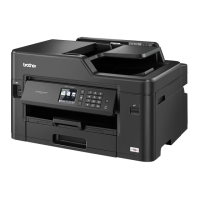
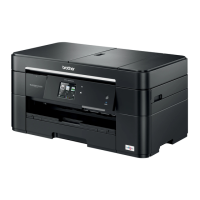
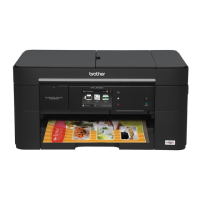
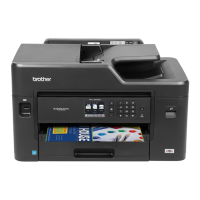


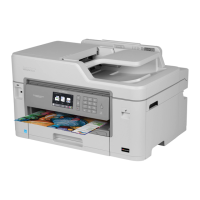
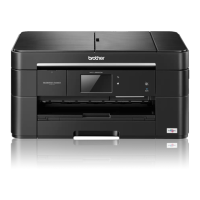

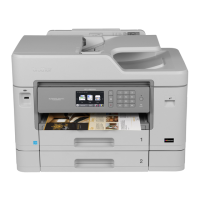
